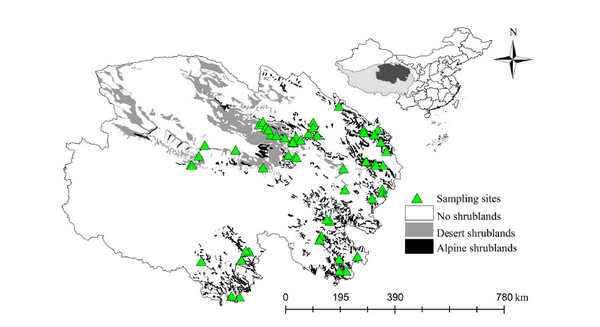Assessment of soil organic carbon (SOC) concentration in high-altitude shrublands is essential for understanding C dynamics in terrestrial ecosystems.Hence, we investigated the SOC concentration and its influencing factors using198 soil profiles (0–100 cm) from 66 sites between 2011 and 2013 in the northeastern Tibetan Plateau shrublands. SOC concentration was different under different shrubland types, with SOC concentration significantly greater in the alpine shrublands relative to the desert shrublands, whereas SOC concentration showed limited increases with altitude. Both mean annual temperature (MAT) and mean annual precipitation (MAP) have positive relationships with SOC concentration, and their relationships are moderate. Compared with MAT, a correlation between MAP and variation in SOC concentration was larger. Meanwhile, with increasing soil depth, a correlation between variation in SOC concentration and climatic factors was smaller. Soil pH seems to be a robust factor that not only had a significant negative correlation with SOC, but also played an important role in regulating a correlation between climatic condition and variation in SOC concentration. Controls on variation of SOC concentration on the Tibetan Plateau help to understand soil C dynamics in terrestrial ecosystems.

FIGURE 1 Spatial distribution of the sampling sites in the shrublands of the Tibetan Plateau. The Tibetan plateau vegetation map was obtained from China?s vegetation atlas with a scale of 1:1,000,000 (Chinese Academy of Science, 2001) [Color figure can be viewed at wileyonlinelibrary.com]
This result was published in European Journal of soil science with the title of "Controls on variation of soil organic carbon concentrationin the shrublands of the north-eastern Tibetan Plateau".
The link below will guide you to the reading:
